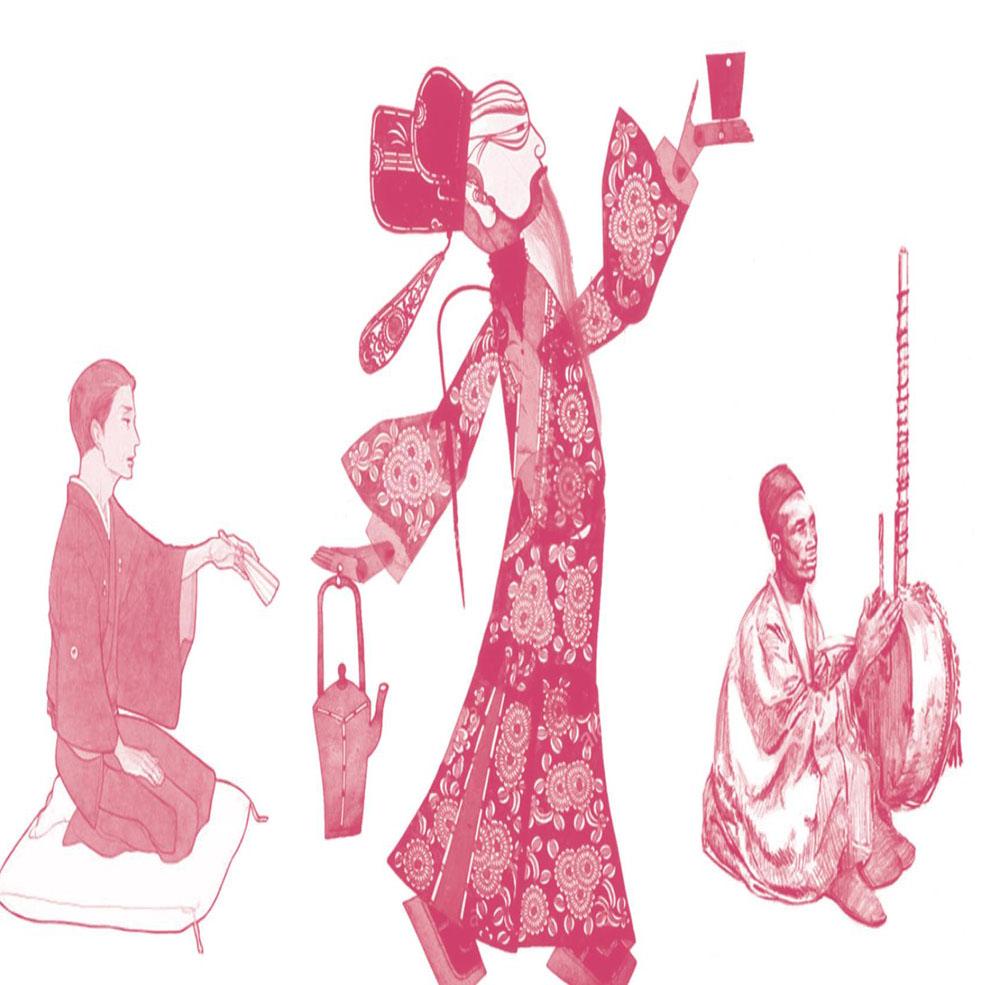尘寰万事,何以陈说
艾米·S.

Its said there isnt anyone you couldnt learn to love, once youve heard their story. Dave Isay knows that. The ability to honor every human by listening to what they have to say about themselves is central to StoryCorps1, the nonprofit he founded in 2003.
The premise of StoryCorps is simple: One person interviews another and their conversation is recorded for posterity2. Its a strikingly straightforward proposition. But then, storytelling has always been less about glitz or gadgetry and more about connection and communication. No matter the tech, humans have invariably figured out a compelling way to tell each other stories.
Thats not to say we all tell stories the same way. Far from it. As Kay Turner, a folklorist and independent scholar whos on the board of the New York Folklore Society, notes, “Even if a story is the same, each culture will tell it differently, because each one has its own genres and cultural rules.” Thats led to a host of different traditions and practices beloved around the world. Here are just some of them.
Hula
You might not know it while on an island vacation luau3, but traditional hula dancers dance not to a beat, but to language, Hawaiian-language chants or songs. Without the words, the dance loses meaning as a story. Hula shares traditional stories as well as mythology and creation tales, including those of the gods and goddesses of the islands.
Chinese Shadow Puppetry
Traditional shadow puppetry tells folk stories, issues moral lessons, and projects specific local customs. Most often seen at celebrations such as weddings or religious festivals, the puppets are silhouettes shaped from leather or paper that are manipulated on long rods by storytellers. The puppeteers either sing, often in falsetto, or are accompanied by singers and musicians. Though it originated in China during the Han dynasty, the tradition has spread to countries throughout Southeast Asia.
Zajal
The classical Arabic version of a poetry slam4 or rap battle, Zajal originated in Lebanon and is practiced across the Middle East and the United Arab Emirates. Competitions pit one poet or spoken-word artist against5 another. One poet recites a stanza (often insulting the opponent), then the other responds with a stanza using the same meter and rhyme.
Cunto
This ancient Sicilian storytelling method draws from Greek theatre and relies heavily on improvisation. It alternates between sung verse and spoken prose and is often performed on a small wooden platform. The stories can occasionally include marionettes, though are typically told with a single prop or none at all. The storytellers, known as cuntisti, traditionally tell stories of epic heroes and their struggles, though these days they also include tales of daily Sicilian life.
Rakugo
This Japanese tradition is performed in monologues by a single storyteller, called a hanashika6. The storytellers are similar to comedians, and they tell tales of daily life and reinforce historical and moral lessons, though they generally avoid making direct reference to particular events or figures.
Griot
Griots, or Jelis, are the traditional keepers of a societys history in West African cultures. Griot storytellers often play instruments such as the kora, similar to a lute7, and preserve family and cultural histories in the manner of a genealogist. In some West African cultures, griots were at once singers of praise and messengers for nobility.
Bharatanatyam
Indian temple dancers, or devadasis8, perform bharatanatyam, a dance that is considered a form of prayer. The dances tell the stories of specific deities, such as Krishna or Shiva, and are unique to different temples and spiritual days. While the bharatanatyam, which originated in Tamil Nadu, in South India, has been in existence for millennia, it has experienced a renaissance in the past century.
Calypso
Calypso developed in the early 20th century in Trinidad, where the lyrics, which described local life and neighborhood dramas, were used as a tool to share news and shine a light on everything from the challenges of a banana farmer to local political corruption. As a political tool, calypso was often subject to censorship by the government. “Song is a popular form of expression in all Caribbean storytelling,” says Maxine Alexander, a Jamaican-American artist and storyteller. “Reggae9 and calypso deal very heavily in political injustice and social disparity, so storytellers use this musical platform to express things that couldnt be spoken about. Were singing about the stories around us in daily life.”
據说,人人都有可爱之处,听过他们的人生故事就会爱上他们。戴夫·伊赛深谙此道。他于2003年创立了非营利性组织StoryCorps,该组织的核心宗旨就是通过倾听个体的人生自述来表达对每一个生命的尊重。
StoryCorps的设想极为简单:一人与另一人访谈,记录谈话内容传于后世。这一做法格外简洁明了。不过,讲故事始终没有多少浮华雕饰,更多侧重联系沟通。无论技术如何发展,人类总能找到方法将彼此的故事讲得引人入胜。
这并非意味着我们述说故事的方法千篇一律,实际上远非如此。纽约民俗学会理事凯·特纳是一位民俗学家,亦是一位独立学者。正如她所指出的那般,“即便故事内容一式一样,每种文化的陈说之道也会各有不同,因每种文化均有其特有的体裁与文化准则”。这便使世上有了许多各不相同但同样深受喜爱的传统与习俗。以下仅为其中几例。
草裙舞
在尽情享受夏威夷度假中的美馔盛宴时,你或许还不知道,传统草裙舞舞者们的翩翩舞步,附和的并非节拍,而是语言——夏威夷语的圣歌或歌曲。若有曲无词,舞蹈便失去了叙事性。草裙舞讲述的是传统故事及神话和创世故事,包括群岛之上男女诸神的故事。
中国皮影戏
传统的皮影戏讲述民间故事,传达道德训诫,展现当地特有的风土人情。皮影戏多见于婚礼、宗教节日等庆典。皮影剪影由皮革或纸板制成,说书人以长竿操纵。皮影戏艺人要么以假声歌唱,要么由歌者或乐师进行伴奏。这一传统虽起源于汉代的中国,但已远播至东南亚各国。
俚谣
俚谣是一种传统的阿拉伯语诗歌吟诵对抗赛,起源于黎巴嫩,盛行于中东和阿拉伯联合酋长国。参与该项赛事一对一比拼的是诗人或说唱艺术家们。诗人背诵一段诗节(时常用语言攻击对手),对方用韵律与韵脚与之毫无二致的一段诗节回敬。
昆托
这一源远流长的西西里叙事方式以希腊戏剧为鉴,且在很大程度上依靠即兴创作。它在唱诗与念白之间来回切换,通常于一隅盈尺木台上进行表演。在故事的讲述过程中,偶尔会有牵线木偶登场,不过通常仅会借助一件道具(或全无道具)。叙事者一般被唤作cuntisti,通常讲述史诗英雄及其斗争故事,但如今也讲述西西里人的日常生活。
落语
这一日本传统艺术由唤作“噺家”的说书人以独白的形式进行表演。说书人类似喜剧演员,他们诉说市井的家长里短,注重历史与道德训诫,但通常避免直接提及特定事件或人物。
部族史说唱艺人
在西非文化之中,部族史说唱艺人(或Jelis)是社会历史的传统守护者。部族史说唱艺人经常演奏类似于鲁特琴的科拉琴之类的乐器,并以系谱学家的方式对家族与文化历史罗缕纪存。在西非某些地方的文化中,部族史说唱艺人既是咏功颂德的歌者,亦是膏腴贵游的使者。
婆罗多舞
印度的神庙舞者(或叫神庙舞女)表演婆罗多舞,这种舞蹈被视为祈祷的一种形式。舞蹈表现特定神灵(如奎师那或湿婆)的故事,每个神庙和宗教节日都有各自独特的舞蹈。婆罗多舞起源于南印度泰米尔纳德邦,已然长存千年,又在过去的百年重振旗鼓。
卡利普索民歌
卡利普索民歌盛行于20世纪初的特立尼达拉岛。字里行间,将当地风土人情和家长里短的故事娓娓道来。这些歌词被用于传播消息,揭露蕉农遭遇的苦难和地方政治的腐败等人世黑暗。作为政治工具,卡利普索即兴讽刺歌时常受到政府审查。“在加勒比海地区的各种叙事法中,歌曲是一种流行的表达形式。”牙买加裔美国艺术家、叙事者马克辛·亚历山大说道,“雷盖乐与卡利普索民歌重在揭露政治的不公正与社会的不平等,叙事者借这一曲榭歌台,将不可言宣之事曲尽其妙。所咏之事,尽是日常生活。”
(译者为“《英语世界》杯”翻译大赛获奖者)

